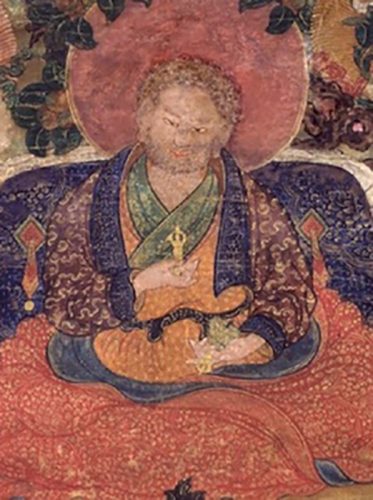Thursday March 3, 2022 NYC
Talk at the End of the Asana & Meditation Class
Wednesday, March 2, 2022:
Reflecting Daily Life in Practice of Asana:
Confronting the Attachments in the Mind
“Do not do what you want to do;
if you do so, then you will be able to do what you want to do”
~ Satguru Shri Mahayogi Paramahansa
In this month’s Prananvadipa, I was struck by Shri Mahayogi’s teaching about recognizing the attachments in the mind that lead us to follow certain patterns of behavior. “Do not do what you want to do; if you do so, then you will be able to do what you want to do” is a teaching that I was familiar with, but when I read that portion of the Satsangha, it felt to me that Shri Mahayogi was describing what it meant in much greater detail, and I couldn’t stop thinking about how I myself act out of attachment (and its twin, avoidance) both in asana practice and in daily life.
I started to notice how often my mind would try to reach for its own comfort and convenience. It might be in the realm of asana, where it would try to convince me to practice fewer poses, or hold them for a shorter time, or even to skip a day of practice. Or it might be in the realm of work, where my tendency might be to change the priority of tasks towards ones where I feel more confident or in which I have a better chance of making a positive impression about myself. No matter the situation or task, whenever I found myself gravitating toward gratifying my mind, that teaching would come back to me and make me feel how much I was truly getting caught up in my mind’s attachments. More and more, I need to apply myself to proactively recognize the mechanism that brings up these attachments when I feel uncertain or uncomfortable, and make the strong effort necessary to “do what I want to do in Yoga,” as Shri Mahayogi says, which I feel means to really choose actions that will weaken the power of attachment…actions that cause those feelings of uncertainty and discomfort, and to do so consistently, so I can develop the habit of acting according to the Truth rather than according to my mind’s whims.
This may seem like a very basic and obvious necessity for learning and growth—recognizing the attachment to preconceived notions about what ought to be done and how to do it—but somehow reading Shri Mahayogi’s teaching about it seemed to inspire me with a sense of urgency toward dealing with it more thoroughly myself.
In my role at my job, I often am assigned tasks that don’t fall neatly into anyone else’s job description, and this week one such task really threatened to overwhelm me. It has all the elements that make me want to avoid it: big and messy, necessary and with a definite deadline, and outside my area of expertise. Having to tackle it gave me a strong desire to do almost any other task first…but then the teaching rang out in my head once again, “do not do what you want to do…” I felt that behind my avoidance was actually an attachment to how I wish to be perceived as a worker: reliable, competent, helpful. And along with that attachment, a fear of failure and having to admit that the task might be too much for me to accomplish within the given time frame.
Trying to look at the situation through the lens of Shri Mahayogi’s teaching made me feel that I could find a middle way. I didn’t have to come up with an excuse to get out of finishing the project—which is what my mind really wanted to urge me to do, and I could admit I was struggling without giving up entirely. By looking at myself with more honesty and clarity, perhaps the attachment to my self-image can start to be weakened a little bit, just as the Master seemed to be teaching in that Satsangha.
I am not sure my understanding of Shri Mahayogi’s words is well-developed, but when I confronted my feelings and tried to peek behind them according to his teaching, the overwhelmed and beleaguered feelings began to melt away. The sense of discomfort lessened, and when I later went to do my sadhana, I felt that perhaps my experience of not trying to either run away from my issue or deny that I was having an issue in the first place, could also improve the way I was confronting myself through trying to stay in a challenging pose for longer or being more consistent and thorough in the way I was practicing.
In that same Satsangha, Shri Mahayogi also mentions that time plays a role in getting rid of the mind’s attachments:
“Therefore, the words ‘if you do so’ imply the passage of time…at that time, the power of attachment is not there anymore, so you can do it without attachment, once you get the secret of it or understand it.”
I am determined to continue trying to practice not doing what I want to do, and checking my choices against the Truth, more and more until I myself am able to take actions without attachment, both in my sadhana and in my daily life.
~ Prajna
To make a financial contribution, visit our CONTRIBUTION PAGE.
Visit and share our WELCOME PAGE to join our online classes.
